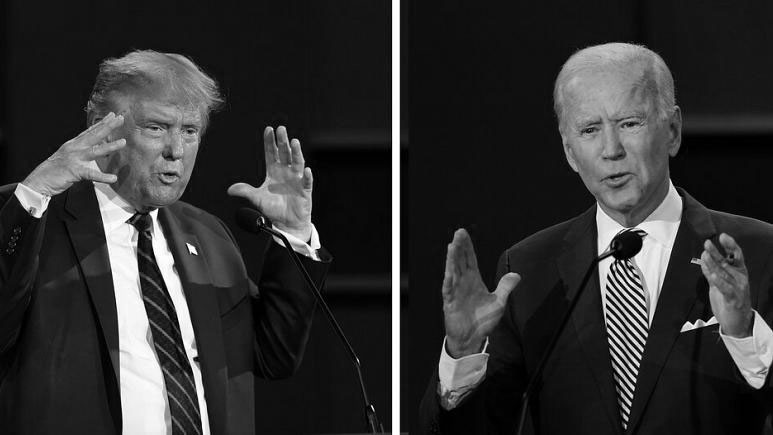One of the biggest criticisms of the 2016 election was that the polls were wrong.
The polls underestimated Donald Trump and the “silent majority” and all but guaranteed a President Hillary Clinton. This however is not the case. A fair criticism of the 2016 election perhaps was the media’s portrayal of national polls was done poorly. But to say the polls were wrong is not a true statement.

To debunk this statement, let’s start by specifying which polls we are talking about. We are discussing national polls. These pollsters got the opinions of people all across the country and made their calculations on who they believed would win the most votes nationwide.
Leading up to the day of the election, RealClearPolitics had Hillary Clinton leading national polls by just about 3 percentage points. Hillary Clinton would go on to win the popular vote by just about 2 percentage points. But as we know, winning the most votes in the election does not necessarily mean that the candidate will win the presidency as it is actually the electoral college that decides the election.
So what accounts for the 1% difference between the polls and the results? The answer is margin of error.
While a semester-long course in statistics may be a better way to understand how polling works, it’s not very difficult to understand on a basic level. Most polls are calculated with a 95% confidence interval. A confidence interval simply means that 95 out of 100 times, the results exhibited will be the results. The confidence interval then determines how you will calculate the margin of error.
Most polls will tell you their margin of error. That margin of error explains that the poll is accurate within a certain amount of percentage points. For example, if a poll has a margin of error of 3 percentage points and it finds that 50% of Ohioans have a favorable view of President Trump, then in reality it is somewhere between 47-53% of Ohioans have a favorable view of the president. And this range will be accurate 95 out of 100 times. So, there is a 5 in 100 chance that the results end up falling outside of this range.
So we’ve debunked this myth that the polls were all wrong. But why do polls matter? Polls matter for a lot of reasons. But for the most part, they don’t really matter to the average voter. Polls can help candidates realize what works best for them. If a candidate tries a new campaign tactic and the polls for them increase, then they know to keep at that tactic and vice versa.
So what are the polls telling us about 2020? Most polls have Joe Biden leading nationally by a wide margin that is outside of the margin of error. While not a complete guarantee, a betting person might put money on the idea that Joe Biden will win the popular vote. A WSJ/NBC poll shows that in the aftermath of the first debate, Joe Biden received his biggest national lead of 14 points over President Trump.
The other thing to note, unlike many other elections, Biden’s lead has been extremely consistent. From time-to-time President Trump has been able to eat into that lead. But for months now, Joe Biden has consistently had a large national lead over Donald Trump.
This, however, does not by any means guarantee a President Biden. While the polls were not as horrific in 2016 as people make out, Donald Trump was indeed the underdog in 2016 and he pulled off a huge upset. Nate Silver’s Fivethirtyeight has Trump’s odds consistently around 20 in 100 for winning the electoral college. Fivethirtyeight is different from reading individual polls. Fivethirtyeight complies state polls and national polls to best predict the outcome of the presidential election.
It is important to note that the 2020 election is much different than 2016. Since his election, Trump has gone with a “base strategy” of campaigning which is the opposite to Joe Biden’s campaign style. Trump is not very focused with expanding his support as he is with energizing his current base and making sure that those people actually turn out in large numbers to support him.
However, the pandemic along with Trump’s own fight with COVID-19 has hurt this campaign strategy as it is more difficult for the president to hold the large rallies that defined his 2016 campaign. In addition, this election is different because President Trump is no longer a political outsider. He may still attempt to paint himself in that light but he has been in Washington for 4 years.
This is his America now, his Republican party and he is no longer a political outsider who is going to bring about change to the current status quo. He is the status quo and he must defend the current state of America. In contrast, Joe Biden’s job is to have Americans ask themselves that age old question, “are you better off now than you were four years ago?”
Even with the likelihood being that Biden will win both the electoral college and the popular vote, don’t count Trump out just yet. Polls explain what would happen if the election happened today. They do not account for all of the surprises that can happen between that day and election day. As we have already witnessed, 2020 is full of surprises.
While Trump’s debate performance and his fight with coronavirus has yet to do him any favors, it is possible for this race to change rapidly at any given moment. Vice President Pence could perhaps bring energy to the Trump campaign, another spike in COVID-19 cases could occur, a treatment might be discovered or perhaps even a vaccine. Joe Biden could slip up or he could ramp up his performance. Nothing is written in stone until it is all over.

